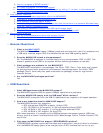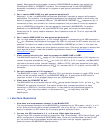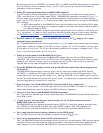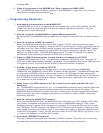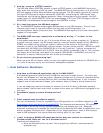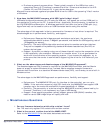
9. How do I program a SETUP transfer?
10. Do I need to program the USB data toggles?
11. The MAX3420E interrupt request bits are cleared by writing "1" to them. Is this backwards?
12. Do you have any programming tips?
5. Host Software Questions
1. How does my Windows application talk to the MAX3420E?
2. Does Maxim supply a custom Windows driver?
3. What example code does Maxim supply?
4. I want to design a MAX3420E-based device that does not conform to a standard Windows class.
What do I use for a Windows driver?
5. How does the MAX3420E compare with USB 'serial bridge' chips?
6. What are the advantages and disadvantages of the MAX3420E approach?
6. Miscellaneous Questions
1. Can my firmware determine which chip revision I have?
2. What is the current revision level of the MAX3420E?
1.
General Questions
1. What is the MAX3420E?
The MAX3420E is a USB full-speed (12Mbps) peripheral controller with a built-in transceiver and
a USB serial interface engine (SIE) that handles the low-level USB signaling details.
2. Does the MAX3420E include a microprocessor?
No. The MAX3420E is designed to interface easily to any microprocessor, DSP, or ASIC. This
makes it possible to add USB to any system without switching processors or tool sets.
3. What packages are available for the MAX3420E?
The MAX3420E is available in two packages. The 32-pin TQFP (7mm x 7mm body size) is good
for prototyping and short production runs because it has package leads. The 24-pin TQFN
package (5mm x 5mm body size, pads underneath the package) is ideal for high-volume
compact devices.
4. Are the MAX3420E packages lead-free?
Yes.
2.
USB Questions
1. What USB speeds does the MAX3420E support?
The MAX3420E supports USB full-speed (12Mbps) operation as a peripheral.
2. Does the MAX3420E comply with the USB spec? Which revision?
The MAX3420E is compliant with the USB 2.0 specification as it applies to full-speed operation.
3. How many endpoints does the MAX3420E support?
The MAX3420E contains four endpoints:
■ EP0, bidirectional CONTROL endpoint, 64 byte FIFO.
■ EP1, OUT BULK or INT endpoint, 2 x 64 byte double-buffered FIFOS
■ EP2, IN BULK or INT endpoint, 2 x 64 byte double-buffered FIFOS
■ EP3, IN BULK or INT endpoint, 64 byte FIFO
With these endpoints, it is possible to build USB peripherals that support popular USB class
drivers, such as a Human Interface Device (HID), Mass Storage, Picture Transfer Protocol (PTP),
and Printer.
4. Why does the MAX3420E not support ISOCHRONOUS transfers?
ISOCHRONOUS transfers require fast interfaces and large buffers, neither of which is consistent
with the MAX3420E design goals (a low-cost part with an SPI interface that can run at any




